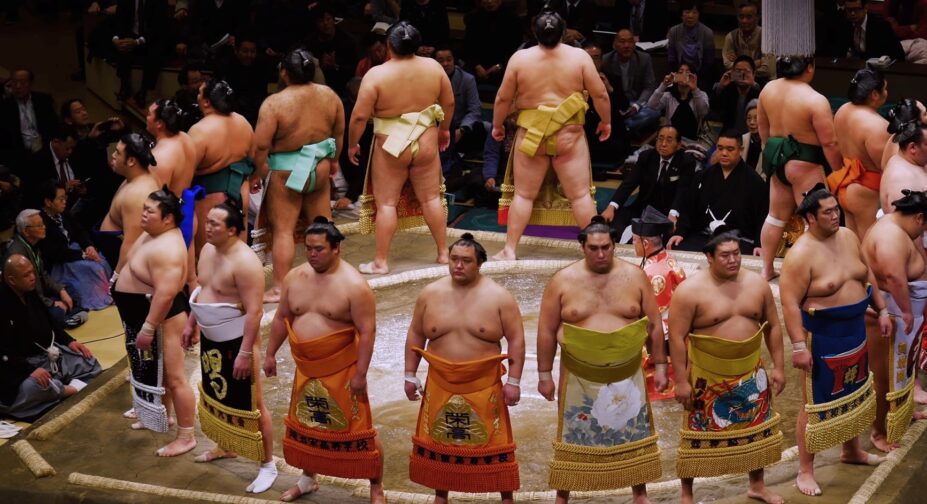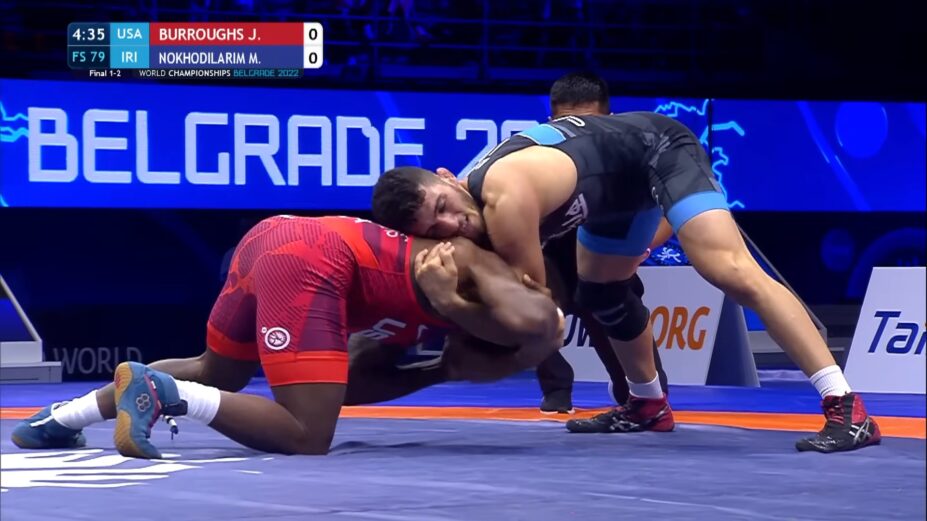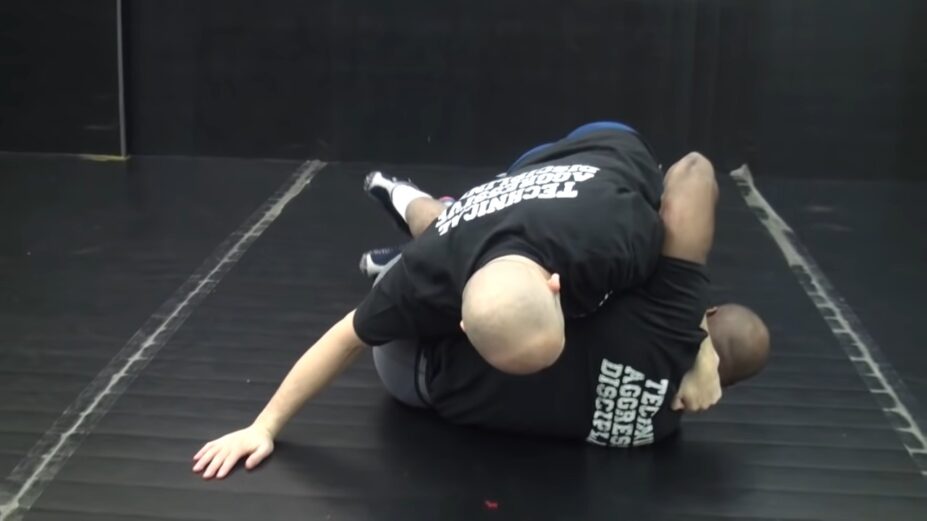Wrestling is considered to be one of the world’s oldest sports, originating in Greece as a form of combat training. Now, as WSC Wrestling Festival 2014 (Saturday, April 26th) is fast approaching, we thought we’d prepare spectators by providing a beginner’s guide to wrestling.
Match Format

A wrestling meet or tournament consists of many matches between individual wrestlers within the same weight classes. A match consists of three short periods and the participant with the most points at the end of the third period wins the match. Individual wrestlers also score points for their teams. The team with the most points by the end of the meet wins.
A match begins after both wrestlers have shaken hands and return to their starting marks awaiting the referee’s signal. The wrestlers then try to gain control over the other by getting on top of or behind their opponent, often resulting in a takedown (worth 2 points). Each period the wrestlers start in one of two positions, neutral position (pictured below) or referee’s position.
Points can be earned by completing various moves. When a wrestler scores, the referee will indicate which wrestler scored and show the number of points by holding up that many fingers. The match ends either when:
- time has expired,
- one wrestler holds their opponent’s shoulders to the ground for a couple of seconds (a pin),
- or one scores 15 points more than the other (a technical fall).
Sometimes the referee may stop and restart the action because for various reasons such as the wrestlers being out of bounds outside the large circle on the mat, loose gear, or potentially dangerous conditions and injuries. The wrestler who had control before stopping the action will then start on top of the other in the referee’s position (pictured below).
Types of Wrestling
Freestyle Wrestling

Freestyle is a form of amateur wrestling that is practiced all over the world. – It allows the use of both the legs and the upper body to take down the opponent. – It is an Olympic sport and has been included in every modern Summer Olympics since 1904.
Greco-Roman
This is another form of amateur wrestling that originated in ancient Greece. – In this style of wrestling, only the upper body is used to attack the opponent. – Like Freestyle Wrestling, it is also an Olympic sport and has been part of the Summer Olympics since the first modern games in 1896.
Folkstyle

Folkstyle is a form of wrestling that is primarily practiced in the United States. – It is commonly known as “collegiate wrestling” and is practiced at the high school and college level. – Unlike Freestyle and Greco-Roman Wrestling, Folkstyle Wrestling allows the use of holds below the waist.
Sumo
Sumo is a Japanese form of wrestling that has a long history and tradition. – It is performed by large, overweight wrestlers who attempt to push their opponent out of a circular ring. – Sumo Wrestling is considered a national sport in Japan and is one of the country’s most popular forms of entertainment.
Freestyle vs. Folkstyle Guide
The two styles of wrestling you will see at WSC Wrestling Festival 2014 are Freestyle and Folkstyle. Freestyle is a worldwide recognized wrestling style that is often seen in International and Olympic competitions. Folkstyle is a more traditional wrestling style in the United States often seen in collegiate and scholastic competitions.
The biggest difference between Freestyle and Folkstyle wrestling is that in Freestyle you do not do anything while you’re on the bottom besides trying not to get turned (called par terre), but in Folkstyle there are moves available for the bottom position.
Rules and Scoring
At its core, wrestling is a physical competition between two opponents. The objective is to pin your opponent’s shoulders to the mat for a count of three. There are also other ways to win, such as making your opponent submit or knocking them out of the ring for a count of 10. It’s important to note that, despite its scripted nature, wrestling can still be extremely physical and dangerous.

Pinning
Pinning is when a wrestler holds both of his opponent’s shoulders to the mat for a set amount of time. – If a wrestler successfully pins his opponent, the match is over and he is declared the winner.
Technical fall
A win is awarded to a wrestler who leads his opponent by a certain number of points. – If a wrestler leads by the predetermined number of points, the match is stopped and he is declared the winner.
Disqualification
A wrestler can be disqualified if he violates any of the rules of the match. – Some common reasons for disqualification include unsportsmanlike conduct, illegal holds, or excessive roughness.
Points system
Most wrestling matches use a points system to determine the winner if neither wrestler is pinned or wins by technical fall. – Points are awarded for various actions, such as takedowns, reversals, and near falls. – The wrestler with the most points at the end of the match is declared the winner.
Key Movements in Wrestling
There are various key movements in wrestling that you can best get familiar with by finding a sports mentor that will properly teach you how your movement should look depending on the type of wrestling you’re interested in.
Takedowns
A takedown is when a wrestler takes his opponent down to the mat. – Takedowns are one of the most important elements of wrestling and are crucial for scoring points.
Reversals
A reversal is when a wrestler takes control of the match by reversing his opponent’s position. – Reversals can be used to score points or to put an opponent in a vulnerable position.
Escapes
An escape is when a wrestler gets out of a hold that has been applied by his opponent. – Escaping from a hold is an important part of wrestling and can help a wrestler avoid being pinned or losing points.
Near falls
A near fall is when a wrestler has his opponent in a vulnerable position and is close to pinning him. – Near falls are important because they can result in a large number of points being awarded to the wrestler who is in control.
The Crowd

The crowd is a critical component of the wrestling experience. From the cheering and jeering to the sing-alongs and impromptu chants, the audience plays a major role in shaping the energy of the event. It’s not uncommon for the crowd to become fully invested in the storylines and matches, making for a truly immersive experience.
Conclusion
In conclusion, wrestling is a unique form of entertainment that combines physical competition, compelling characters, and engaging storylines. Whether you’re a lifelong fan or just looking to get into the sport, this spectator’s guide should give you a solid understanding of what makes wrestling so captivating.

